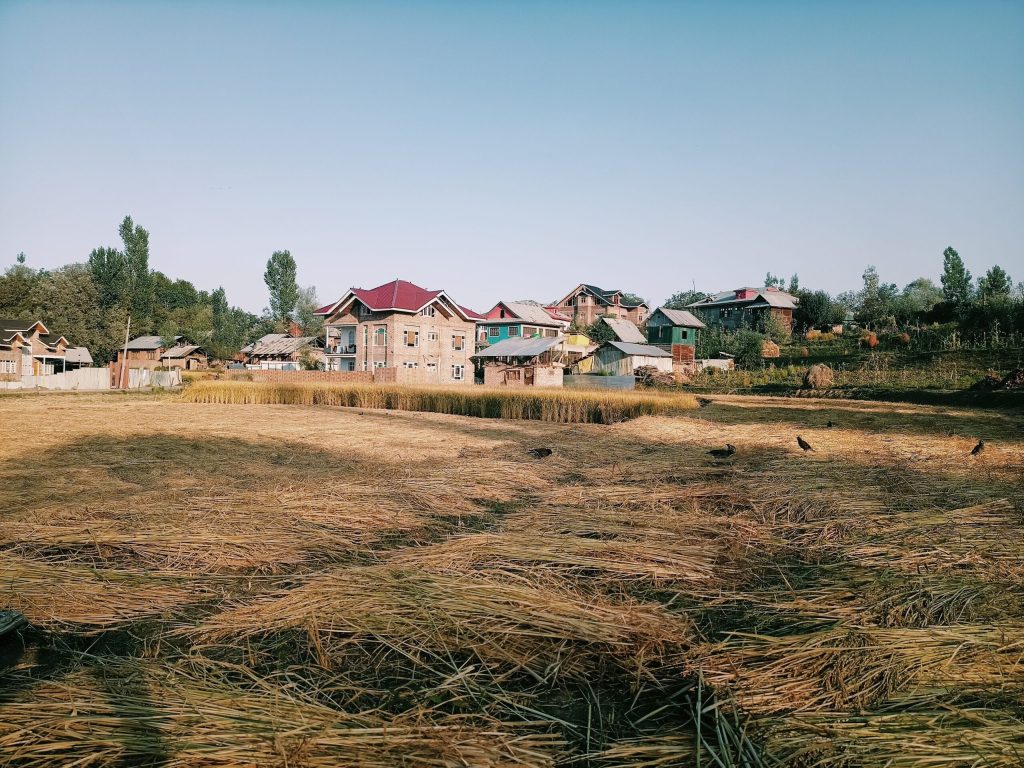
In Kashmir, the land under paddy is steadily diminishing, with approximately 6000 hectares lost over the past seven years. Though there has been an increase in rice yield per hectare, experts feel it won’t compensate for the sharp decrease in the paddy land, writes Riyaz Wani
In Kashmir, the land under paddy is steadily diminishing, with approximately 6000 hectares lost over the past seven years, according to official figures. The current paddy land under cultivation stands at 1,29,000 hectares, down from 1,35,000 hectares seven years ago,
There is a silver lining though: the increase in rice yield per hectare. While earlier it would require 10 hectares of land to yield 10 metric tonnes of rice, now we see the same rice production from just one hectare of land, thanks to advancements in technology.
A high-yielding rice variety SR4 developed at Sher-i-Kashmir University of Agriculture Science and Technology has made it possible. The achievement has been a result of collaborative effort between the university and the agriculture department.
But the overall decline in paddy land has been a source of deep concern. “Paddy land is indeed shrinking across Kashmir, mostly because of conversion into orchards,” explained Farhat Shaheen, an agricultural economist at SKUAST. “But technology has made it possible to get greater produce from less land.”
The decrease in paddy land has been precipitous since 2012 when more and more land started to be converted into real estate. One major cause of this loss has been the rapid urbanization aggravated by the prevailing political conflict in the region which has triggered massive internal migration from the rural to urban centres. This has led to a horizontal expansion of the capital Srinagar and the major and small towns. The urban population which in 2001 was 24.81 percent shot up to 27.37 percent in 2011. Srinagar has witnessed the most influx of the internal migrants.
According to the 2014-15 J&K economic survey, Srinagar district ranks first in the state with 98.6 percent urban population followed by Jammu district with 50 percent. This is because Srinagar has been the principal destination for the people fleeing the hinterland through the nineties. The city is now one of the fastest growing in the world.
In 2011, a London based-based Think Tank on urban affairs City Mayors Foundation put Srinagar at 92nd place in the global ranking of the 300 fastest growing cities. And among the 37 Indian cities which figure in the list, Srinagar was at 23rd position.
The frenetic growth of the city is exemplified by a chaotic spectacle of the work in progress on hundreds of private housing colonies across the region.
Contributing to this unhelpful scenario is the fact that the average size of land-holdings has declined from 1.7 hectares in 1949-50 to around 0.5 hectares. Almost ninety percent of arable land, according to a survey, constitutes marginal and sub-marginal holdings. This has reduced the productivity from agriculture to a mere subsistence level, thus making it economically unviable for the farmers to pursue the activity.
Though increase in yield per hectare is a good thing, it won’t compensate for the decrease in the paddy land.
“This year, we anticipate a record yield, with estimates suggesting a range of 63 to 65 quintals per hectare, compared to last year’s 60 quintals,” Director Agriculture Kashmir, Choudhary Mohammad Iqbal said, attributing this success to timely planting, favourable weather, and effective implementation of government schemes.
However, the shrinking paddy land isn’t solely due to urban expansion; it’s also driven by changing cropping patterns. Some farmers find it economically viable to grow vegetables or convert paddy land into orchards.
However, addressing the issue of vanishing farmland and promoting sustainable agriculture remains a pressing concern for the region’s future.
“The shrinking of paddy land in Kashmir is a concerning issue that threatens both food security and the livelihoods of its people,” read an editorial in a local daily. “While technological advancements have boosted rice yields, it’s essential to prioritize the preservation of agricultural land for a sustainable future. And the government needs to play a role required of it.”













